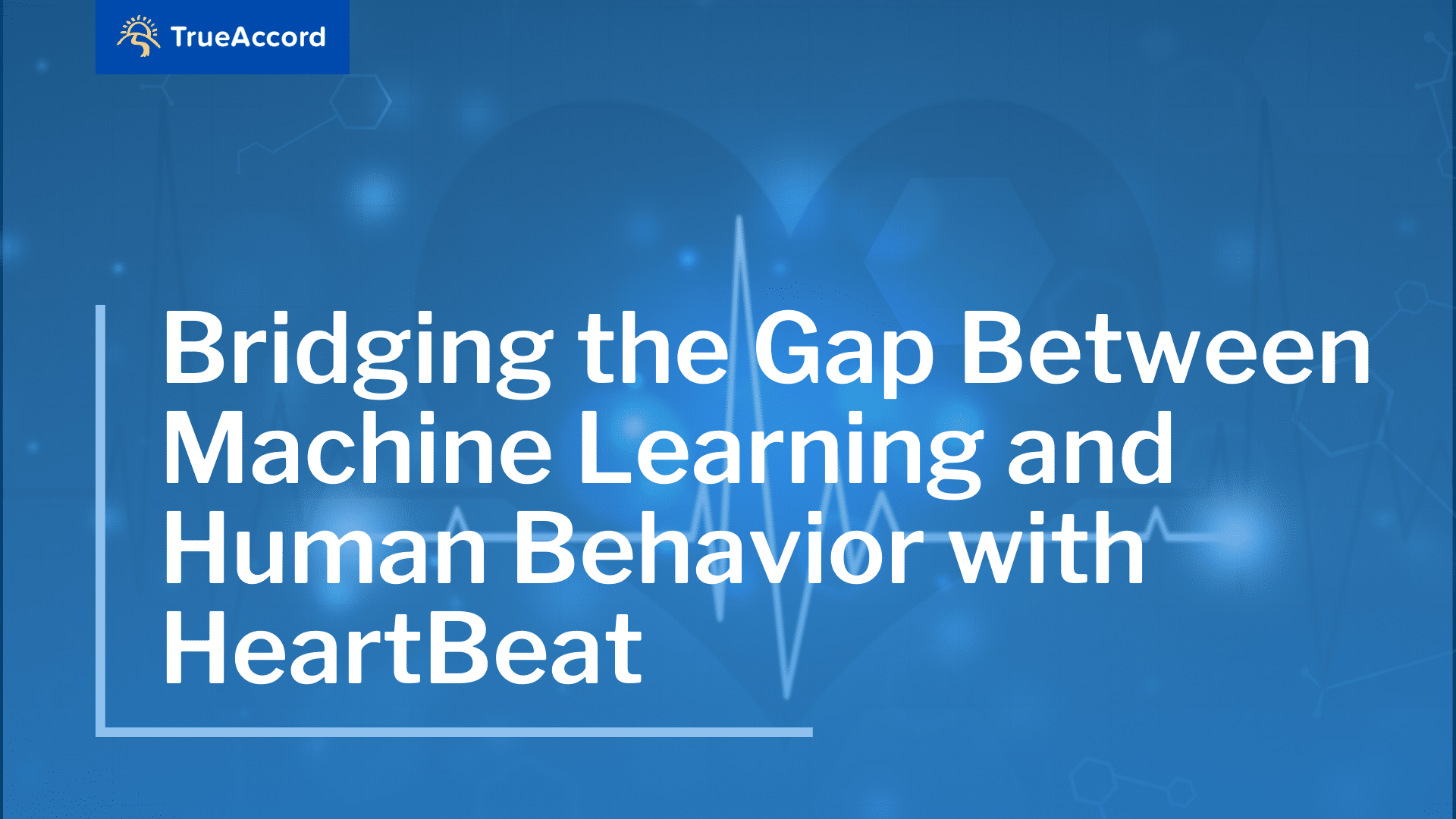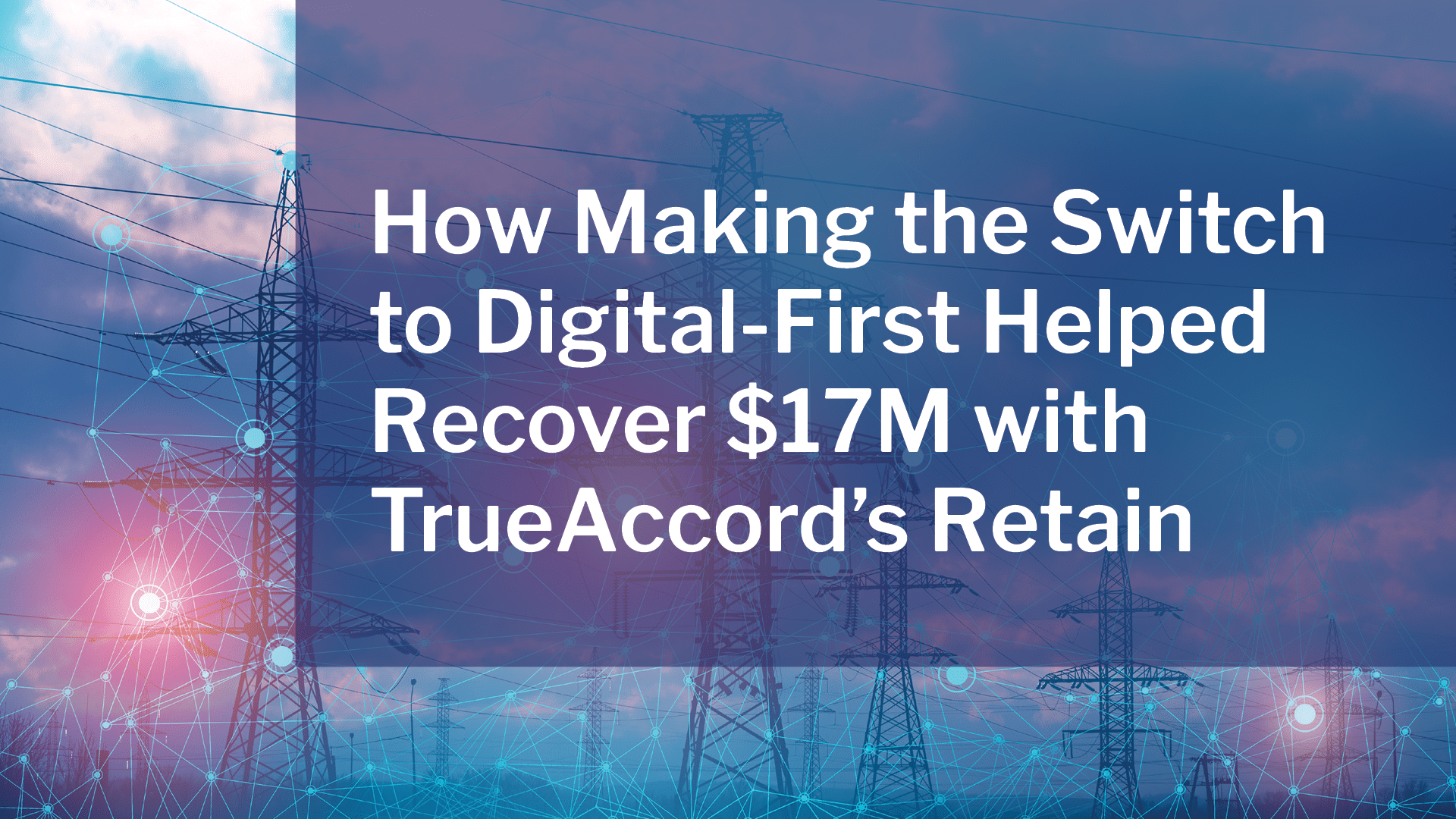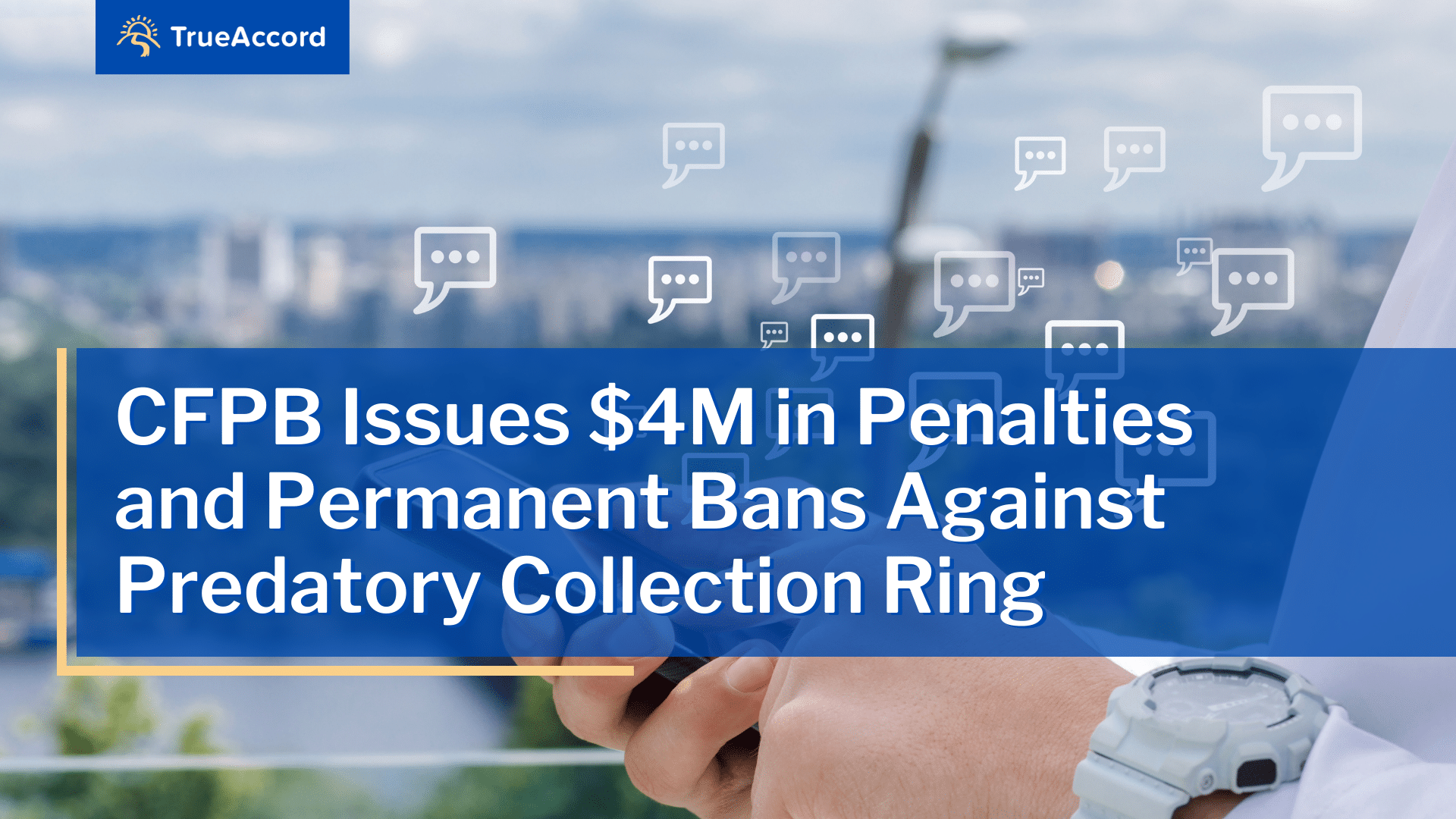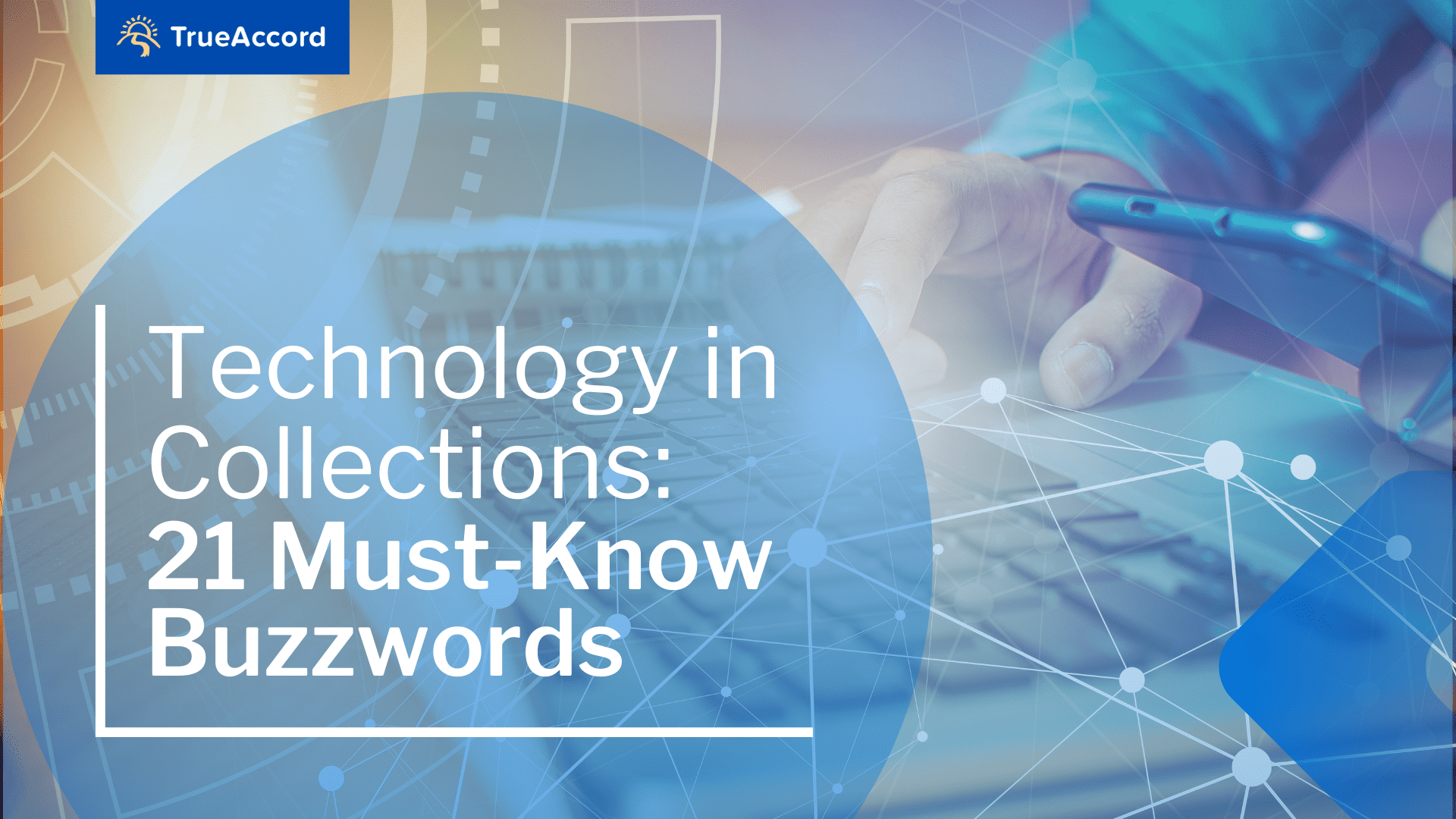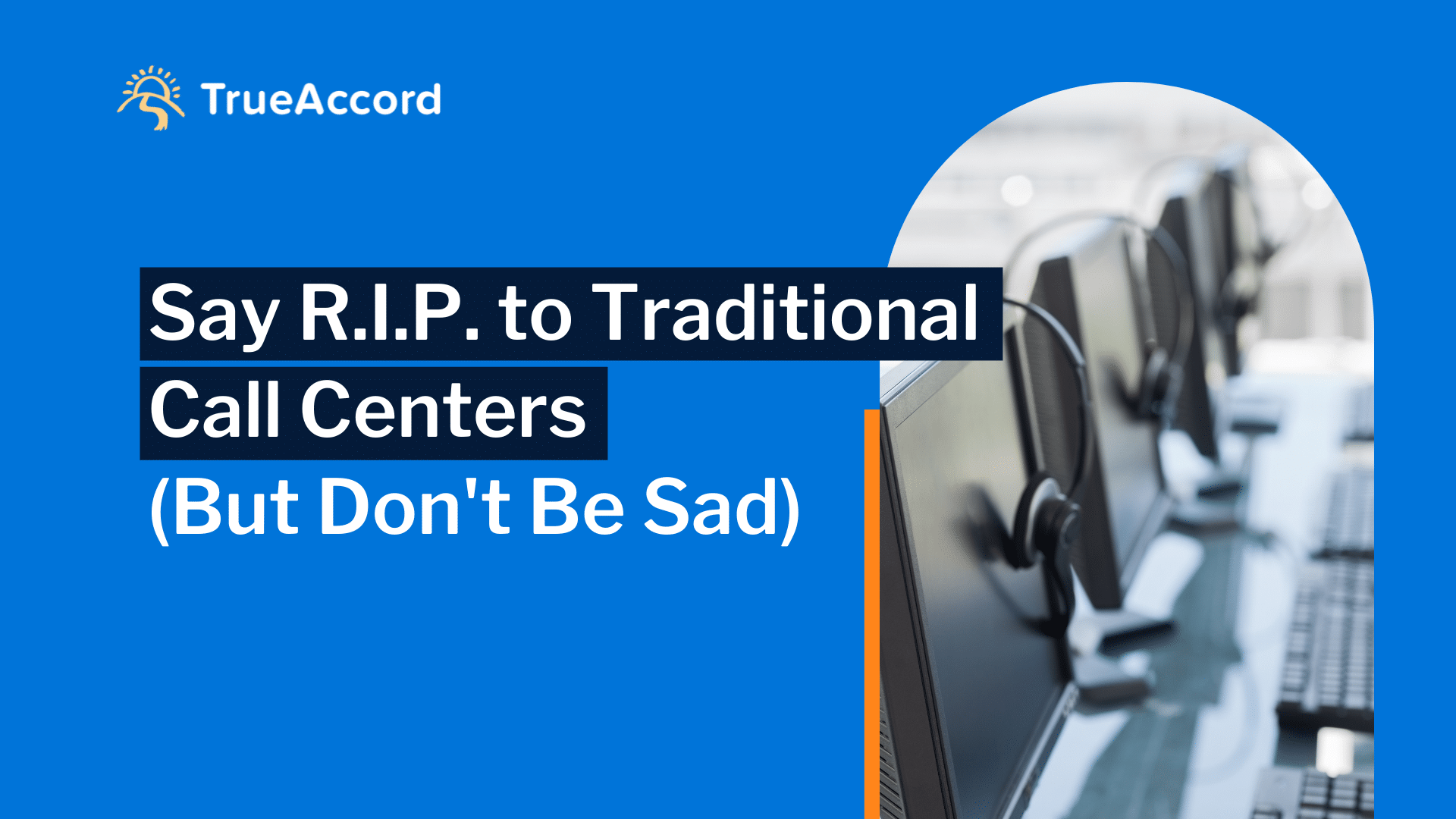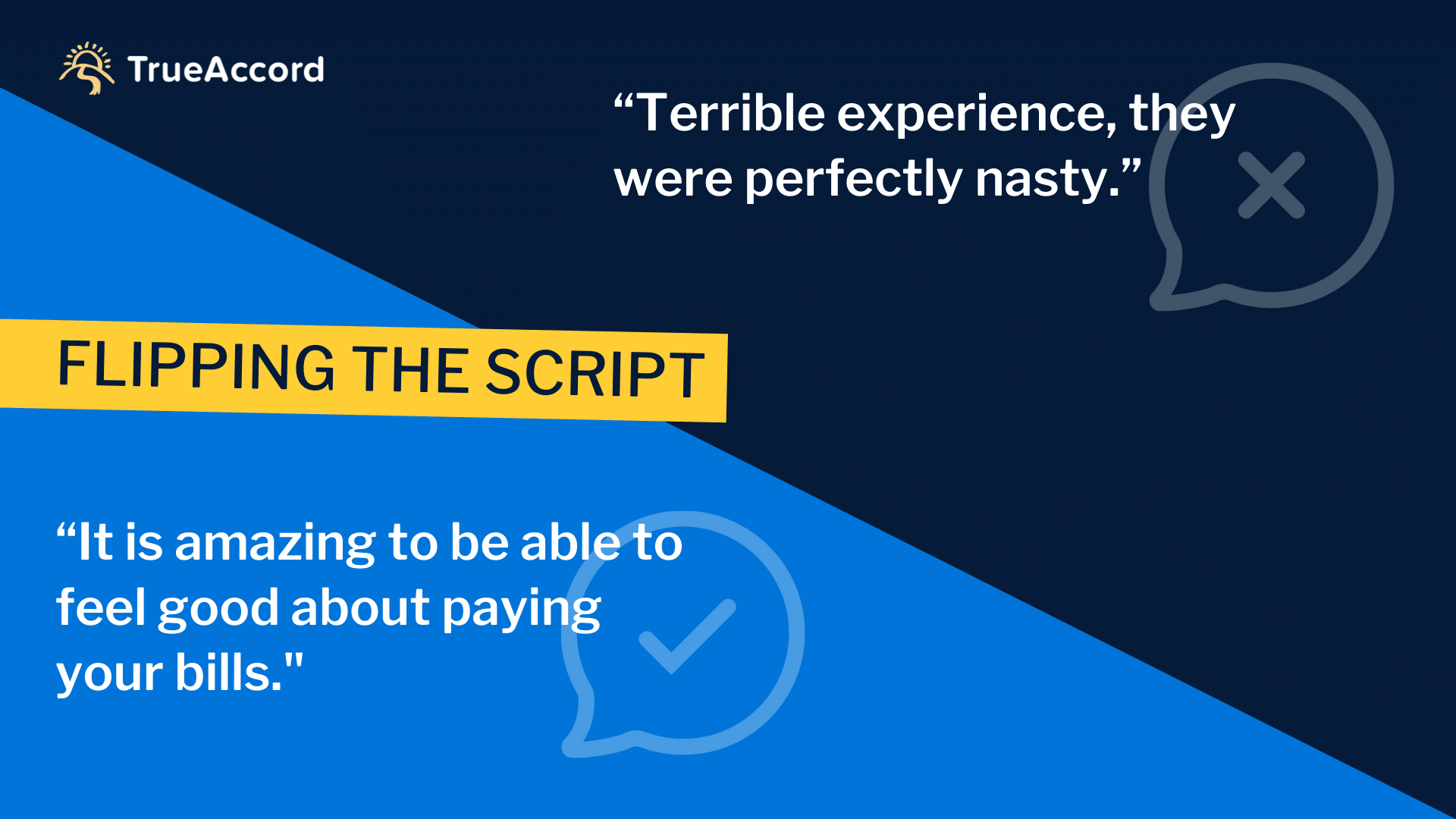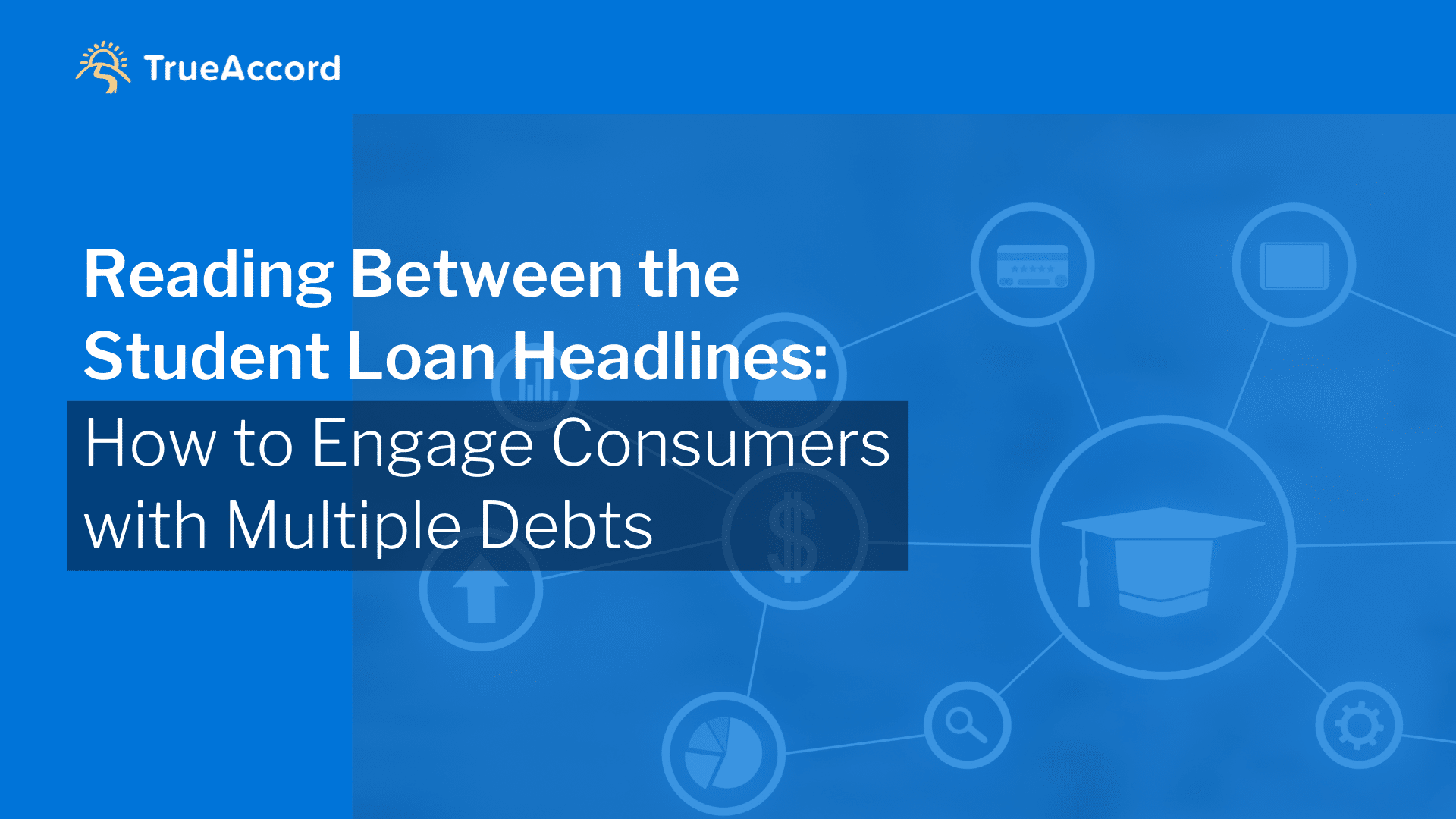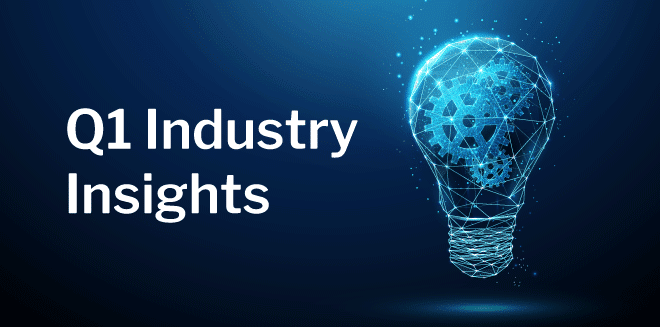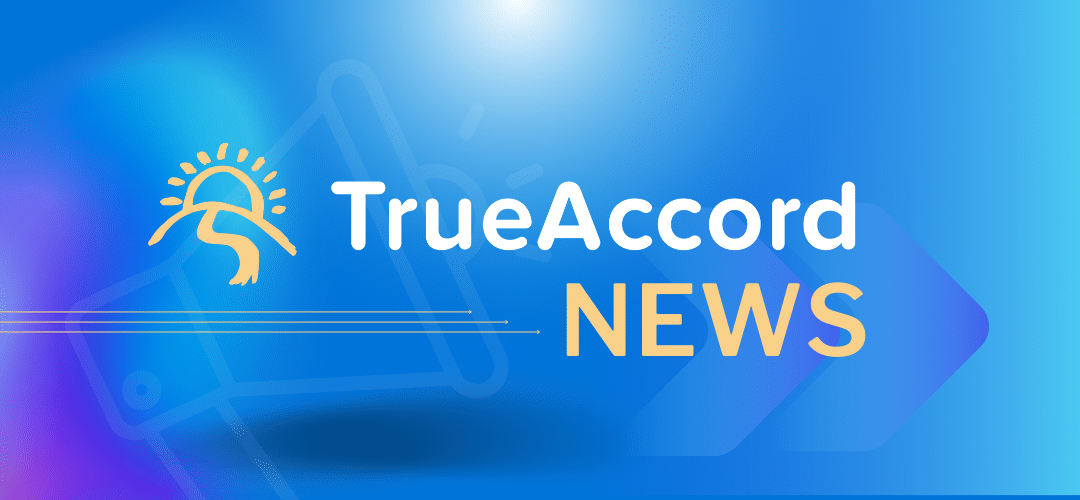Bridging the Gap Between Machine Learning and Human Behavior with HeartBeat
When it comes to engaging consumers in debt collection, behavioral science helps us to understand and respond to an individual's situation, motivations, and contact preferences. For example, we know that consumers don’t like being called by debt collectors. With that knowledge, behavioral science then helps us determine the optimal way to meet consumers where they are, contact them when they want by using their preferred channels, and lastly sending a message that resonates with them enough to engage. It starts with a lot of engagement data. At TrueAccord, we’ve been collecting data about how consumers engage with us for nearly 10 years to determine the optimal ways to engage with consumers, and then use that data to generate a special collections experience just for them - from best time, best channel, and best language to engage that individual consumer. Take content for example, each person is unique and different people respond differently to different communications. They are driven to action by different words and are convinced for different reasons. In writing content, it's our goal to write content that responds to these individual needs. There are 2 things we consider when writing content for collection communications: content type and content dimensions. Content type is what we send based on a user's actions. As an example, following up on a page view—if a consumer is viewing a payment plan, disputing a debt, or thinking about unsubscribing but drops off the page, we will try sending a follow up email or SMS with other plan options, information about the account, a description of how to unsubscribe or dispute for them to view. We will continue to try different content types until we find the right one that engages the consumer. Content dimensions are more established behavioral science frameworks used to ensure that our communications vary in style and tone so that we are speaking to consumers in a unique way that will motivate them to engage. Everyone responds to different motivations so we use a variety of different frameworks until we find the one that connects with the individual Each piece of content is tagged depending on the content type and dimensions so it can be easily used by HeartBeat, our powerful and intelligent patented-machine learning engine. Good content will lend itself well to automated, data-driven prioritization done by HeartBeat to present customers with the best possible content item at each given time. How can technology personalize the debt collection experience? By using technology and behavioral science to determine the best way to communicate with consumers, we are able to personalize each user’s unique experience. Our patented machine learning engine mentioned above, HeartBeat, allows us to do just that. HeartBeat collects engagement data and then, after analyzing multiple solutions, suggests the best possible treatment depending on the individual and their engagement. HeartBeat also uses a real-time feedback loop so the technology can adapt to a consumer’s engagement right as it happens. Instead of relying on data like age and location, HeartBeat uses engagement data to personalize the communication process. The engagement data is collected every time a consumer engages in a certain way, whether it’s clicking on an email or SMS, visiting a webpage, and/or viewing payment plan options. Our system learns what motivates the consumer and responds with content or payment options that will resonate with them. For example, if the consumer clicks on an email that uses likable content mentioning “short term cash flow,” our system may determine to send a friendly follow up email letting them know that they can set up a payment plan that starts on a later date when they’ll have the ability to make a payment. We know what motivates an individual may change from day to day depending on their circumstances, so we treat them based on their active engagement and behavior with our system rather than construct a specific profile for each consumer and treat them based on that basic account profile. By combining behavioral science and machine learning, the best-possible payment options are offered to customers based on their debt situation, previous communication, and engagement data. Whether their actions show that they would benefit from a long-term payment plan, or if it shows that they’d prefer to pay in full, HeartBeat will suggest the best option for that customer. The power of using behavioral science and machine learning is anticipating the needs and preferences of our customers and using that to help them as seamlessly as possible. Overall, there is no one way of communicating that will work for everyone across all situations, and tailoring communication and collection strategy to align with consumer preferences is better for both the consumer, lenders, and our business. That’s why building the bridge between machine learning and human behavior is essential. Discover how HeartBeat can help humanize your collection process in our new in-depth eBook, Upgrade Debt Recovery & Collection With HeartBeat, available for download here» Learn more about behavioral science from TrueAccord’s User Experience Director, Shannon Brown in a new interview in Collector Magazine here»
How Making the Switch to Digital-First Helped Recover $17M with TrueAccord’s Retain Platform
When COVID hit in 2020, one Fortune 500 company needed to find an effective way to communicate and collect from the rising overdue accounts, with many of their customers falling into financial hardships. While the company had previously relied on old-school communication tactics like direct mail and an in-house call center to reach customers who had delinquent accounts, they knew a better solution was needed. The company had already observed firsthand a rise in customers’ preference for digital communications between mobile apps and online bill pay options, making it clear that this was the best route to go. Rather than build from scratch in-house—which would’ve been costly and time-consuming—the company evaluated third-party options before choosing TrueAccord and implementing Retain, the client-labeled early-stage collections solution. Once implemented and customized to fit the company’s needs, TrueAccord helped them collect over 63,000 payments to recover over $17 million. Retain’s digital outreach strategy made a significant impact on customer engagement and resolution beyond just payments with improvements across their paid in full rate, overall collections rate, average amount collected daily, and more. And with the help of HeartBeat, TrueAccord’s powerful machine learning decision engine, they were able to observe behavior data and optimize digital touch points and engagement in real-time. In just a few weeks, this digital collections approach caused a major transformation that only continued to improve. Discover all the astounding results in our full Case Study and learn more about how Retain helped the company implement the successful solution. Want to see how much more your company could recover with Retain? Request a demo!
CFPB Issues $4M in Penalties and Permanent Bans Against Predatory Collection Ring
On May 23, 2022, the Consumer Financial Protection Bureau (CFPB), in partnership with the New York Attorney General, filed a proposed judgment against a debt collection enterprise with a history of deception and harassment to pay $4 million and be permanently banned from the debt collection industry. This follows the September 2020 Federal Trade Commission (FTC) initiative “Operation Corrupt Collector” to protect consumers. The FTC, along with more than 50 federal and state law enforcement partners, focused on several predatory collection methods, including “phantom debt collection,” a practice where companies were trying to collect debts they cannot legally collect or that a consumer does not owe. According to federal regulators in the 2022 case, the group of debt collectors in upstate New York went after their targets by calling friends, family and employers and orchestrating "smear campaigns" against people they claimed owed money—only one part of the predatory practices the debt collection ring employed. Predatory Practices in Debt Collection The collection industry has long been scrutinized for the methods used to engage and recover debts, but technology and social media have created new avenues for predatory practices to evolve. In addition to the smear campaigns, other illegal tactics to collect debt outlined in the CFPB lawsuit include: Falsely claiming arrest and imprisonmentLying about legal actionInflating and misrepresenting debt amounts owedHarassing people with repeated phone callsFailing to provide legally mandated disclosures Contacting to Collect Via Social Media As of November 30, 2021, debt collectors can now contact consumers on social media. This change to the Fair Debt Collection Practices Act (FDCPA) did include specific rules for social media communications: The message must be privateThe debt collector must identify themselfThe debt collector must provide a way for the consumer to opt-out of social media communications In addition to these new rules under the FDCPA, collectors who abuse or harass consumers via social media violate the Dodd Frank Act's prohibition against unfair deceptive abusive acts or practices (UDAAPs). The CFPB and FTC through Operation Collection Protection, also look to prosecute UDAAPs in their protection of consumers Compassion Collects More (and Protects Against Penalties) Although the majority of collectors do not go as far as committing "emotional terrorism," as one social media smear campaign victim described in the 2022 lawsuit, finding the appropriate way to connect with today’s consumers to recover delinquent funds can seem nebulous—and nerve-racking with the potential for hefty penalties. Even as communication channels expand and new regulations are handed down, best practices to engage with consumers remain the same: friendly, humane messages will empower and motivate customers to pay more effectively than aggressive outreach and threats. TrueAccord has proven that this compassionate approach works with more than 16 million customers served, 4.7 on Google reviews, A+ rating with the BBB, overwhelmingly positive customer feedback, and industry-leading recovery results. Discover how you can flip the script on your collection communication with TrueAccord and protect your business and customers. Schedule a consultation today to get started»
Technology in Collection: 21 Must-Know Buzzwords
Your Guide to Key Terms for Today’s Debt Recovery Strategy Reaching consumers today requires a more sophisticated process than simply dialing the phone or sending a generic email, especially when it comes to debt recovery and collection. But reviewing potential strategies can often leave you lost in a sea full of acronyms and buzzwords. Between terms like AI, machine learning, and data science, it can be difficult to keep up with the different definitions—and understand how they impact your business and bottom line. To help keep this word salad straight, we’ve compiled a glossary of helpful terms, definitions, and examples to help differentiate them: Accounts per employee (APE), account to collector ratio (ACR): The number of delinquent accounts that can be serviced by an individual recovery agent – often used to measure cost effectiveness.Artificial Intelligence (AI): AI is a blanket term describing a range of computer science capabilities designed to perform tasks typically associated with human beings. Machine learning (ML) is a subset of AI. Through AI, processes like debt collection can become more efficient by developing better outreach and deployment strategies.Big Data: This term means larger, more complex data sets . Big data can save collectors a lot of time by using many variables for analytics-based customer segmentation, insert, insert..Coverage: The percentage of users for whom organizations have digital contact information, such as email addresses or phone numbers.Customer Retention Rate: Measures the total number of customers that a company keeps over time. It's usually a percentage of a company's current customers and their loyalty over that time frame.Data Science: A cross-discipline combination of computer science, statistics, modeling, and AI that focuses on utilizing as much as it can from data-rich environments. Data science (which includes machine learning and AI) requires massive amounts of data from various sources (customer features such as debt information or engagement activity) in order to build the models to make intelligent business decisions.Deep Learning (DL): A subset of machine learning. Deep learning controls many AI applications and services and improves automation, performing analytical tasks with human intervention.Delinquency rate: The total dollars that are in delinquency (starting as soon as a borrower misses as a payment on a loan) as a percentage of total outstanding loans.Deliverability: The percentage of digital messages that are actually reaching consumers (e.g., as opposed to ending up in email spam filters).Digital engagement metrics: A range of KPIs that capture how effectively digital channels are reaching and engaging consumers.Digital opt-in: The percentage of users who have indicated their preference to receive digital communications in a particular channel.Efficiency: Measures a company's ability to use its resources efficiently. These metrics or ratios are at times viewed as measures of management effectiveness.Machine Learning (ML): Technology that uses algorithmic modeling techniques to observe patterns and trends, reassessing the best approach to achieve a goal, and adapting behavior accordingly. It continuously, automatically learns and improves at a massive scale as more data is observed. With the help of machine learning, companies can make sense of all their data and take on new approaches to debt collection processes from better customer experience to more efficient delinquent fund recovery.Net loss rate: The total percentage of loan dollars that get charged off (written off as a loss).Open rate, clickthrough rate: The percentage of users who are actually opening and clicking digital communications.Predictive Analytics: Predicting outcomes is one specific application of machine learning. It allows companies to predict which accounts are more likely to pay sooner and allows them to better plan operations accordingly.Promise to pay kept rate: The percentage of delinquent accounts that maintain a stated commitment to pay.Promise to pay rate: The percentage of delinquent accounts that make a verbal or digital commitment to pay.Right party contact rate: The rate at which a collections team is able to establish contact with the consumer associated with a delinquent account.Roll rate: The percentage of delinquent dollars that “roll” from one delinquency bucket (e.g., 60 days past due) to the next (e.g., 90 days past due) over a given timeframe.SMS: An acronym that stands for "Short Message Service" referring to text messages on cellular devices. For more information on how to get started integrating innovative technologies into your debt recovery strategy, schedule a consultation today.
Reaching Consumers Beyond Outbound Calling: Insights and Learnings from Collection Experts
If transforming the way you reach customers to recover delinquent accounts isn't on your radar in 2022, a year where projected delinquencies are expected to soar, you're at risk. Fortunately, we recently rounded up a panel of experts to share their insights and experiences taking those first steps away from outbound calling and toward better consumer communication in our webinar “What Labor Shortage, Wage Inflation, and Regulatory Restrictions Mean for Your Call Center”—available to watch on-demand now» Heather Bentley, Citizens Bank | John Craven Sr, Cox Communication | Jennifer Masterson, PNC | Richelle Rocazella, TrueAccord Below are some of the top questions, answers, and first-hand accounts from our discussion (plus some attendee poll results): What percentage of contacting consumers is done via phone vs other channels? Heather Bentley [HB]: Overall a little bit above 50%, but that includes outbound calling from live agents and interactive self-serve calls, which really is more the digital channel. John Craven Sr [JC]: Live agent we're at 0%. We do use a virtual agent, so I would say we use that virtual agent probably 40% to 45% of the time. Jennifer Masterson [JM]: We're close to 50/50. We will always be taking phone calls, but we are doing a lot more now in the digital space trying to contact people. Richelle Rocazella [RR]: Less than 1% of our communication is via phone. And that is all inbound when we do engage with our customers. We will only make an attempt to reach a customer via phone if they have requested a call. What does outbound calling versus an omnichannel strategy look like at your organization? JM: An omnichannel strategy triggers customers to get them to self-serve and frees up our agents to talk to customers that need more help or more assistance. That's really where the more valuable conversations happen. HB: It's really about putting the two pieces together [outbound and other channels], and trying to find the sweet spot of customer experience and collection effectiveness. Pulling those two things together - so if we find customers who are responding to a specific channel like text, but then if they go past the point we would normally see in delinquency, we can say, "Wait a minute, something's different. Now we need to call this customer.” JC: When you take a person that's spending a good portion of their day making outbound calls, and you turn them into an inbound agent where they're talking to a customer almost every time that the phone rings, the maximization of your employee's time puts you into a completely different realm of being able to perform. Was COVID or labor shortage and wage inflation a driving factor in the shift to a more digital approach and self-service approach? JM: We started before COVID because consumer behavior was dictating it. It's really hard to get someone to pick up the phone. The number of times that you actually connect to somebody live on dials is really low. That's really what drove us to start going down the digital path. Now, I think there's a ton of benefits to be gained from that, things like when COVID happened, this labor shortage. Once you have the channels in place, it becomes easier to ramp them up or down depending on what's happening in the economy. Once you have the channels in place, it becomes easier to ramp them up or down depending on what's happening in the economy. Jennifer Masterson, Executive Vice President, Retail Lending Solutions, PNC How did you get started? HB: We started individual channels at times with easy things like virtual messages, then interactive messaging and email and text, and then moved into two-way in those channels. And we're still working so that you could have the same experience in that digital space that you'd have with an agent on the phone. JC: In 2014 [Cox Communications] started texting customers and then we added email around 2017, but we didn't have a digital platform at that time. We implemented a digital platform in early 2020, and fortunately we were able to go full omnichannel with integrated channels that we were able to roll out. What are some of the challenges to building an omni-channel strategy? RR: Making sure all channels are integrated to develop a full customer experience journey. Also ensuring service levels are maintained as more channels are added. HB: If you're not sequencing [the channels] and working them together, it can be like bombing your customers again. If you're bombing them with calls and now you're bombing with text and with email and it's just, "Hey, we'll just try everything." You quickly desensitize your customers to your communications. JC: We set up all the channels and then we went on a journey to bring them all in and orchestrate them so they were working together. If I can suggest anything to those that are using the phone strategy, if you're ready to start your digital journey, start with a journey that is an orchestrated journey, instead of building out the channels and then trying to bring them all together. You'll get so much further ahead and a quicker response to digital integration. From a self-serve standpoint for debt collection and recovery, what are some of the compliance or regulatory challenges to keep in mind? HB: As we move to digital channels, [regulators] move their focus to what happens in email and on your website and in text messages, because before their focus has been about calling over the last 10 years. So as an industry we have to stay ahead of that and think both like a customer and like a regulator. Be a bit conservative in some of your interpretations of how far and wide your communications go. JC: From the risk side of things, if you're moving from an analog or non-digital traditional approach to a digital approach, think how to digitize your compliance rules that may have some risk mitigation in it. Don't create a new reality—make sure that you replicate what you have already in place to make sure you have safeguards. JM: On the phone side you're dealing with agents that have to remember to say things right. But coming out of COVID a lot of the banks and other financial institutions put hardship assistance online just as an example, and I think the regulators like that because everybody's essentially getting the same experience. I think it's easier to be in compliance and meet all the regulatory requirements in a channel like that, than it is with agents. As an industry, we have think both like a customer and like a regulator.Heather Bentley, Senior Vice President Head of Consumer Specialty Operations, Citizens Bank What was the best way organizations should have prepared to meet the guidelines for the CFPB’s Regulation F to move to a more omnichannel approach? RR: The best thing any organization could have done for Reg F would be to have a strong legal and compliance group that you work with. While it's not something that drives revenue, it is a must in every organization. Where would be an ideal place to start exploring or considering if you're moving away from the outbound call center and looking to integrate more channels? JC: Whatever your strategy is, you need to set yourself on a path making sure that your digital journey has a brain. Recognize that different profile customers react differently to different contact channels. As you use your omnichannel approach, having that brain mentality. Knowing what your customers' preferences are and then leveraging those preferences will set you on a great path to performance. JM: Every company is different in terms of what capabilities you have or don't have. While texting and emailing made sense for PNC at first, maybe there's another channel that a company can easily plug into. Start wherever you can because consumers don't want to pick up the phone and call. Whether it's the ideal option or not, give consumers another path and another option. Start somewhere and then build off of that in whatever way makes sense for your organization. RR: For businesses in the early stages of adopting a more omnichannel approach for collections, email or text would be a good place to start. Knowing what your customers' preferences are and then leveraging those preferences will set you on a great path to performance.John Craven Sr, Enterprise Center of Excellence Call Center Director, Cox Communication Watch the full webinar for even more insights, advice, and answers to even more audience questions» Ready to get started on the digital transformation of your collection strategy? Schedule a consultation to learn how you can take the first steps»
Say R.I.P. to Traditional Call Centers (But Don’t Be Sad)
“Death of the call center”—you may have heard this phrase before, but today’s labor shortage, wage inflation, regulatory risks, and changing consumer behavior are all nails in the coffin of this once sure-fire business tactic. But don’t say a final farewell to the call center just yet. There is a way to utilize those phones to more effectively reach your business goals—especially when it comes to recovery and collection operations. Let’s take a look at how call centers operate today, what factors threaten their effectiveness, and what we can do to make them viable again. You can take an even deeper dive and read our full coverage of “Outbound Calling Doesn’t Work, Here’s What Does” here» Outbound Calling vs. Inbound Servicing To understand how collections call centers can survive and remain profitable in recovering delinquent funds, we need to understand the difference between two basic functions of a call center: outbound calling vs. inbound servicing. Outbound Calling: Call center agents dial out directly to customers Inbound Servicing: Call center agents answer incoming calls made by customers A 2020 survey showed the effectiveness (or ineffectiveness) of outbound phone calls to collect debts due for more than 30 days. When we break it down, we can start to see that the outbound model to collect on delinquent accounts is truly on life support this time around. So What are the Killers of Outbound Call Centers in 2022? When the “Death of the Call Center” was first foretold back in the early 2000s, the culprit was firmly identified as the internet and technology taking over the call center career opportunities for people. But a closer look shows this isn’t the case given today’s massive shifts in the labor market, regulations, and consumer behavior. Labor Shortage & Wage InflationNew technologies aren’t pushing people out of working in call centers—people just don’t want outbound calling jobs like they used to. Competition to hire is fierce and compounded by the Great Resignation sweeping through the market. Unfortunately, many outbound call centers already faced notoriously high (and costly) attrition rates as well. On top of that, call center wages have increased by 15%+ since the pandemic began, an astounding spike even when every industry is riding the wave of wage inflation. Regulations & Consumer ExpectationsOutbound dialing platforms must comply with a long list of regulations—especially in the debt recovery and collection sector, like the TCPA, FDCPA, and Reg F—all before they can even start talking about recovering delinquent accounts…that is, if anyone even answers their call. Consumer preferences have moved away from talking on the phone and moved towards self-service options online. Do a quick google search on how to stop debt collection calls and an endless amount of articles will pop up. But overall, consumers have found an even simpler solution: don’t answer the phone. So can you actually connect with your customers through a call center? A Second Chance for Call Centers In the wake of changing labor markets, regulations, and consumer behavior, businesses must evolve to integrate digital-first solutions into call center operations to save manpower, regulatory compliance efforts, and customer satisfaction. We may be perpetuating the old trope, but 2022 really could spell the end for outbound call centers as we know them, and be the opportunity to transform them into inbound engagement centers. Find out how in our full coverage of “Outbound Calling Doesn’t Work, Here’s What Does” here» None of us should be sad to see it go. Not consumers, not employees, not businesses. It’s time to say R.I.P. to outbound calling for the betterment of all.
Flipping the Script: Collecting with Kindness
Historically, debt collectors have been depicted as hostile, intimidating or downright rude - and over the years they’ve confirmed those stereotypes through aggressive phone calling and deceptive tactics. But to what success and at what cost? We know there’s a better way. The idea of compassionate, considerate consumer communication is behind TrueAccord’s approach to debt recovery and drives our innovation, and based on what we’ve seen, we believe there’s a lesson to be learned for others in the debt collection space. In collaboration with OnePoll, TrueAccord recently surveyed consumers about their financial regrets and found that 63% of respondents had some amount of money in collections. While 88% of respondents didn’t have any past experience with accounts in debt collection to report, the 12% that did weren’t so lucky, and their experiences were pretty awful. We don’t like to hear about consumers being treated badly and reading these consumer comments brings to light the problem we’re trying to solve. So what are consumers’ complaints about their experiences with debt collectors? Here are just a few: “A million phone calls a day.”“I was disgraced in a public place.”“Relentless and rude, judgemental and uncaring.”“Terrible experience, they were perfectly nasty.”“They are mean and evil and clever and make you feel terrible about yourself.”“They get angry when I don't have the money to pay back in time.” We’re here to flip the script. At TrueAccord, we don’t call consumers to collect past due debts, and we certainly don’t threaten or harass. By using a digital-first communication approach and friendly, humane messages, we actually connect with consumers and they feel empowered and motivated to pay. Don’t believe us? Here’s some real-life customer feedback from people TrueAccord has helped out of debt: “Thank you for your patience and understanding!”“Love the email communication and the ability to pay online.”“I actually looked forward to making payments because I felt there was a sense of mutual respect between myself and TrueAccord. It felt good to take care of a lingering debt.”“Thank you for your kindness, patience and professionalism in the wake of hardship.”“It is amazing to be able to feel good about paying your bills. You helped me all the way. No pressure.”“My experience with TrueAccord was seamless. Truth be told, it's the first time I've ever enjoyed time spent with a debt collection company!” So far the kindness approach has worked for TrueAccord - with more than 16 million customers served, we pride ourselves on our 4.7 on Google reviews, A+ rating with the BBB, and overwhelmingly positive customer feedback, not to mention our industry-leading recovery results. We’re proving that when you treat consumers with respect and kindness you can actually achieve better results for your business and customers. Interested in finding out more about how outbound calling for debt collection is a thing of the past, our approach to digital-first debt collection and how it can work for your business? Check out "Outbound Calling Doesn't Work, Here's What Does" for more.
Reading Between the Student Loan Headlines: How to Engage Consumers with Multiple Debts
The freeze on student loan payments has been a hot topic since the start of the pandemic—not just for borrowers, but for debt collection departments outside of the student loan debt sector. Although student loan borrowers get a reprieve for another few months, repaying other debts can still be a tricky issue for consumers to budget for today. Debt collectors need to find ways to start engaging with borrowers now before student loans get added back on to the balance. The Freeze Continues Through the Summer On April 6, 2022, only weeks before collections were set to resume in May 2022, the Biden administration announced another four-month extension on the freeze for federal student loan payments, interest, and collections. After granting several extensions due to the ongoing Covid-19 pandemic, the decision to further extend the pause reflects the challenging economic landscape and unmanageable financial burden faced by many Americans. While this is another round of relief for the approximate 42.9 million Americans with student loan debt, the proverbial can is just getting kicked farther down the road as the relief is only temporary. Additionally, uncertainty leading up to the announcement left many in what has become a familiar anxious limbo of whether or not they would be expected to restart their payments; and that uncertainty can have a broader impact for debt collections beyond student loans. Don’t Forget the Debts that Don’t Have an Indefinite Moratorium Student loan debt collection may be dominating the headlines, but it is often not the only financial burden borrowers are carrying. Out of the number of adults with student loans, about 23 million (69%) have at least one additional type of debt, according to the U.S. Census Bureau. Looking at it even closer, surveys found that among those with student loans, consumers also had: Credit card debt (52%)Vehicle loans (33%)Medical debt (18%) The newscycle focus and the ongoing uncertainty of student loan repayments can be confusing to borrowers with multiple debts who are prioritizing based on their cash flow, putting them at an increased risk for delinquency. As noted in our Q1 Industry Insights, February marked the 9th month in a row with increasing 30+ delinquency rates on a unit basis across debt types, notably delinquency increases in first mortgages, second mortgage, auto leases and unsecured personal loans. And with student loans once again receiving temporary relief, these consumers will likely focus on repaying their other debts. The key for collectors is to understand how to engage with consumers that have limited budgets through a variety of affordable repayment options. Engaging Consumers Digitally with Repayment Options The first step is to actually connect with consumers to stay top of mind. While phone calls can go unanswered and canned emails go ignored, reaching customers through customized, digital-first communications can help businesses recover more by reaching those that are ready to repay debts. Consumers already use these types of platforms to interact—surveys found that 46% of people exclusively use digital channels for their financial needs, including banking and bill paying. The second step is to offer consumers repayment options and flexibility knowing they may be balancing multiple bills. With so many financial options at their disposal, consumers have to monitor an increasing number of accounts for banking, credit cards, autopay, recurring payments, installment plans and more. The ability to choose a payment date that aligns with paydays or to push back a payment when something unexpected comes up are invaluable for consumers and will actually lead to brand affinity and better customer experiences. With so much uncertainty already swirling around student loans, businesses have a better chance of successfully reaching and recovering other debt payments if they do so in a way that is familiar to the borrower and provides flexible ways to manage repayment. TrueAccord helps reach consumers where they are when they need to be engaged with through a digital-first approach that cuts through the clutter of other communication channels. Discover how to expand and customize your communication channels for each individual consumer and engage faster with better results. Schedule a consultation today»
Q1 Industry Insights: Consumers Will Consume, Lenders Will Lend, Delinquencies Will Rise
It’s the end of the quarter and, as always, we at TrueAccord are looking at consumer debt trends that will impact our industry and beyond. The four key trends we’re studying are: resumed foreclosure activity, extensive medical bills, the end of child tax credits and historically high inflation. Add these all together and the financial outlook for consumers, especially those in debt, is scary. But there are silver linings, as well. For one, the consumer credit market is looking strong with signs of expansion, specifically, originations for credit cards and personal loans are increasing. Second, the fintech industry continues to grow and evolve to meet the changing needs of consumers, offering more opportunities for financial inclusion and innovative customer experiences. The Downside Look, coming out of a pandemic and into a tumultuous international economic situation, we don’t expect it to be easy. But some definitely feel it more than others. For many families, government stimulus through child tax credits (which ended in December) was helpful in covering the gaps in income from pandemic losses, but it wasn’t enough to prepare them to take on new expenses and restart all the financial obligations that were temporarily on hold. In fact, a recent report from the Columbia University Center on Poverty & Social Policy found that 3.7 million U.S. children were plunged back into poverty by the end of January when child tax credits expired, indicating that the stimulus was making a significant financial difference for many families. In January, the foreclosure proceedings that were paused under the CARES Act resumed after an 18-month hiatus. In January alone this amounted to 56,000 foreclosure starts, up 29% from the month prior. But that doesn’t tell the whole story: 964,464 mortgages are still seriously delinquent and not in forbearance, with 49% in loss mitigation plans. Even more concerning, of those 474,071 borrowers in loss mitigation, 72% just aren’t paying. The average American household is now paying an additional $276 per month on expenses thanks to record-high inflation. And don’t forget pandemic-related medical expenses from Covid-19 testing and treatment. A recent survey found that 56% of Americans, with or without insurance, owe health-related debt, and almost one in six people with medical bills aren’t paying them off. And it’s not just medical bills. According to Experian’s latest Ascend Market Insights, February marked the 9th month in a row with increasing 30+ delinquency rates on a unit basis across debt types. Their data shows that 30+ day past due accounts showed a 7.59% increase month over month with notable delinquency increases in first mortgages, second mortgage, auto leases and unsecured personal loans. Additionally, month over month views of roll rates show 0.91% of consumer accounts were rolling into higher stages of delinquency in February 2022. This indicator has now returned to the same level as the start of the pandemic in March 2020. While student loan payments are still paused through May, the day is quickly approaching when many will see their financial obligations increase yet again, compounding the burden and financial pressure on consumers. The Upside In spite of the challenging economic landscape, the good news is that consumers now have more options when it comes to lending and personal finance, and they’re taking advantage of them. Higher costs of living and, for some, sustained unemployment (partially influenced by the Great Resignation) are driving consumers to look for new lines of credit to manage expenses. According to TransUnion, originations for personal loans are expected to continue rising in 2022 to both non-prime and prime and above consumers, reaching pre-pandemic origination volumes last seen in 2019, while credit card origination and balances will hold steady near pre-pandemic levels. And lenders are happy to lend. Between extra cash on hand from government stimulus, pauses on many financial obligations and new cash flow budgeting options like BNPL taking the payments industry by storm, consumers actually did a pretty good job managing their finances in regard to repaying debts during the pandemic. Delinquencies were at record lows, causing lenders to become more comfortable serving subprime segments that were performing well. As a result, originations for credit cards and personal loans have returned to pre-pandemic levels and have been holding fairly constant over the last two quarters. This bodes well for financial inclusion and the bevy of fintechs looking to get in on the action. From eCommerce and retail to banking and money transfers, every sector features a fintech company that’s innovating digitally to provide more people with better financial access and positive customer experiences. A recent report by Plaid includes key findings about what consumers want from their financial services: 1) apps and services that work when and how they want and that make it easier to manage money, 2) interoperability, with apps and services providing connected experiences, regardless of the providers, and 3) services that not only help them save money but achieve better financial outcomes. And guess what? Fintech companies are delivering. According to research from Bloomberg, fintech companies now originate 38% of U.S. unsecured personal loans, with a large presence in the mortgage and auto loan categories. Boiling This All Down Remember when stimulus money was flowing, consumers weren’t spending as much (because what was there to do?) and instead taking the opportunity to pay off loans and debt and save at record rates? Those times are gone and signs show that consumers are looking to use more credit and take on new loans in response to economic pressures. Unfortunately, a rise in originations will inevitably lead to a rise in delinquencies, especially in a challenging and unpredictable economy. Knowing what comes next, now is the time to start thinking about pre-default and keeping consumers on track with payments and out of collection. For lenders, this means engaging delinquent customers early on when the first signs of slippage occur, and how you do that is important. Consumers today expect a seamless, personalized experience in every financial transaction, and the right recovery operations can continue to deliver that all the way through the customer journey when you have the right strategy in place. If you don’t know where to start in building a strategy, our Recovery & Collection Starter Kit is a good place.
TrueAccord Rolls Out Web Chat in Time for Tax Season
TrueAccord is an intelligent, digital-first collection and recovery company that uses the industry’s only adaptive intelligence: a patented machine learning engine, powered by engagement data from over 16 million consumer journeys, that dynamically personalizes every facet of the consumer experience in real-time. Our team takes innovation seriously and works tirelessly to provide product and service features that deliver outstanding results for clients and customers. Here’s what’s new from TrueAccord. Feature Update: Web Chat Tax season is upon us and in the debt collection industry that means consumers have access to refunds. According to the National Retail Federation, of the 59% of consumers who are expecting a tax refund this year, 33% plan to spend their refund on paying down debt. For this reason, mid-February through May is considered the most productive time of the year for debt collection with many consumers receiving tax refund money and opting to use this extra cash to catch up on their finances. During tax season, it is important to manage the large volume of inbound requests while also maintaining the quality of customer interactions. As a digital-first company, TrueAccord invests heavily in strategic communication with consumers where and when they want it and doesn’t rely on a large call center operation. With an expected increase in inbound communications during tax season, the TrueAccord team determined that a digital-first live chat feature would align with customer contact preferences and enable better customer service during peak times. To solve for this, TrueAccord launched a custom web chat interface in advance of tax season, which is visible to customers as a chat “bubble” on the consumer-facing web pages. The solution offers myriad benefits to both customers and customer service agents including reducing call volume, improving agent capacity to handle multiple consumers, assisting in managing tax season volume and providing a consumer-friendly self-service option for most commonly asked questions. The result? We’ll monitor and analyze how the new web chat feature performs during this year’s tax season, but consumer surveys have shown that web chat is preferred by 41% of consumers over phone, email and social media support, so we anticipate high customer utilization. The expected outcomes of web chat implementation for tax season are: Improved user experience by offering a preferred method of communicationReduced in in-bound call volume Increased accounts closed rateManaged tax season volume and Improved quality service levels across all operations communication channels with self service options for most commonly asked questions and inquiries now via web chat
Get started right now.
Whatever your organization’s technical needs, we have the tools and experts to onboard you today.
Get Started